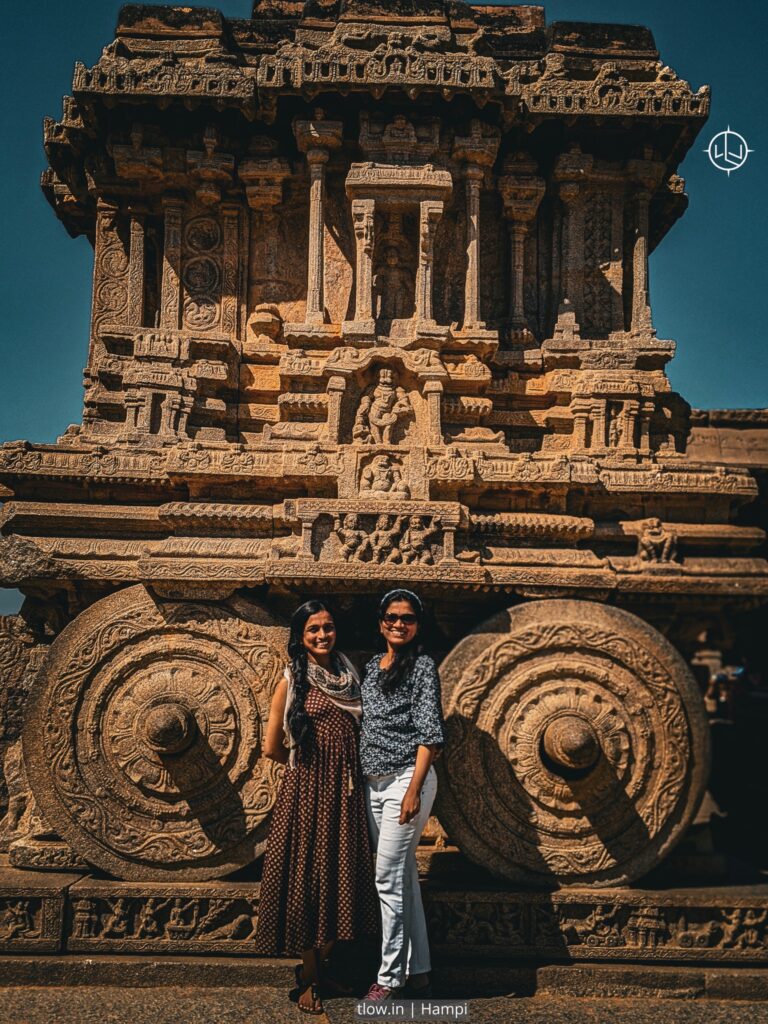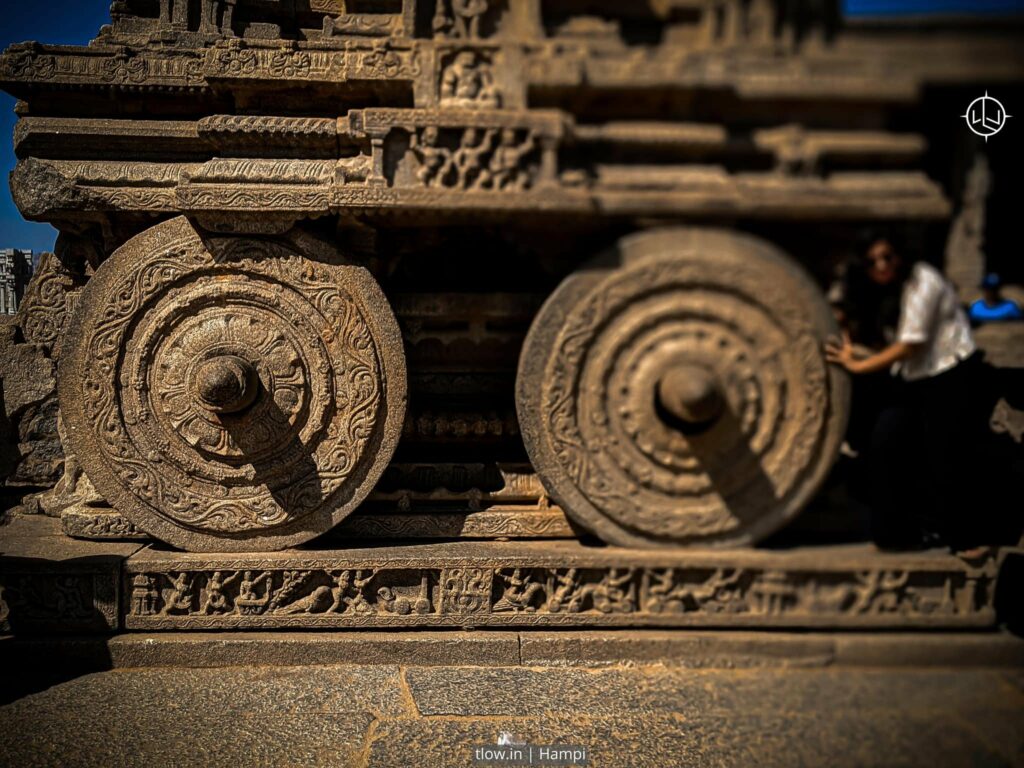
The Beautiful Vittala Temple: Hampi, Karnataka
Beyond the King’s Balance, the path leads to the Internationally famous Vittala Temple. General saying is that “In Hampi, every stone has its own story”. Whereas in this temple every pillar has its own musical sound and it attracts everyone and tempts them to touch and tap for the sound. Though Vitoba is a God of Maratha country, Vijayanagara Emperor regarded Vibota as a form of Krishna.
Table of Contents
The Idol of Vitoba is not in the temple. Though the construction of the temple began in 1513 AD by Krishnadevaraya, it was continued by his successors Achuta and Sadasiva till its destruction in 1565 AD.

Vittala Temple
The temple stands, within high walls with 3 gateways on the east, south and north. The temple stands on a strong stone basement with richly carved designs of King’s horses, elephants, dancing girls and soldiers on the stone basement around the temple. The Dancing halls and Kalyanamantapas in the corners are equally worth noticing. In most of the big pillars, small pillars have been carved in such a way that they produce saptaswara. Vittalla temple is decorated inside and outside and from top to bottom.

In front of the main temple is the Stone Chariot. Though this little stone structure is not carved in a single block of stone, beautiful masonry work between joints is worth appreciation even now.
On the eastern gateway of the temple is another ruined car street and one or two ruined mantapas of no particular interest. This path will lead to the main road to Kamalapur.
The Vittala Temple is one of the most iconic and significant temples in Hampi, India. It dates back to the 15th century and has a rich history associated with the Vijayanagara Empire. Here is a brief overview of the temple’s history:

1. Construction:
The construction of the Vittala Temple began during the reign of King Devaraya II of the Vijayanagara Empire, around the mid-15th century. It was later expanded and enhanced by subsequent rulers, including Krishnadevaraya.
2. Dedicated to Lord Vittala:
The temple is dedicated to Lord Vittala, an incarnation of Lord Vishnu. Lord Vittala is often depicted as standing with his arms crossed and playing the divine musical instrument known as the celestial flute.

3. Architecture and Design:
The Vittala Temple is renowned for its exceptional architectural beauty and intricate carvings. It exhibits the characteristic Vijayanagara style of temple architecture. The main shrine of the temple is surrounded by several mandapas (halls) and structures, including the famous Stone Chariot.
4. Musical Pillars:
One of the most fascinating features of the Vittala Temple is its musical pillars. These pillars are carved with columns that produce musical sounds when struck. Each pillar is said to represent different musical notes or instruments.

5. Importance and Significance:
The Vittala Temple was considered the most important and grandest temple in the Vijayanagara Empire. It served as the focus of religious and cultural activities during that era and was a major pilgrimage site.
6. Decline and Restoration:
Like other monuments in Hampi, the Vittala Temple suffered from attacks and destruction during the downfall of the Vijayanagara Empire in the 16th century. It fell into ruins, and its splendor was buried under the sands of time. In recent years, efforts have been made to restore and preserve the temple’s glory, and it is now a popular tourist attraction.

7. UNESCO World Heritage Site:
In 1986, the Vittala Temple, along with other Hampi monuments, was inscribed as a UNESCO World Heritage Site. The temple’s historical and architectural significance contributed to its inclusion in this prestigious list.
Today, visitors to the Vittala Temple can marvel at its extraordinary architecture, explore the various halls and structures, witness the musical pillars, and enjoy the serenity of the temple complex. It stands as a testament to the grandeur of the Vijayanagara Empire and is a must-visit destination for history and architecture enthusiasts.
For a similar experience >> Click Here











